The Museum of Modern Art (MoMA) in New York has reopened after a 5-month closure to renovate and expand gallery space at the iconic museum. We visited for the MoMA for the first time since it reopened to see Betye Saar: The Legends of Black Girl’s Window. Dear reader, it’s totally worth the trip. Here’s our report on the Betye Saar exhibit in New York.
Major museum exhibitions of the work of black women artists abound this fall
All over town this fall, New York has been celebrating the work of black women artists. And it has been a transforming experience for us to see at least some of the exhibits that showcase the work of our sisters in the temples of high art in Manhattan.
Join our community
For access to insider ideas and information on the world of luxury, sign up for our Dandelion Chandelier newsletter. And see luxury in a new light.
In addition to the installation on the facade of the Met – The NewOnes, will free Us by Wangechi Mutund – and the Amy Sherald show at Hauser & Wirth, a cannot-miss new exhibit in town is Betye Saar: The Legends of Black Girl’s Window.
This excellent MoMA exhibition was organized by Christophe Cherix and Esther Adler, with Ana Torok and Nectar Knuckles.
In the cacophony of the new MoMA — which is marvelous but overwhelming and crowded — this exhibit is a gem hiding in plain sight. It will comfort and provoke you, and if you’re a woman of color (as we are), it will make you particularly proud.
Are you in? Then come along, dear reader.
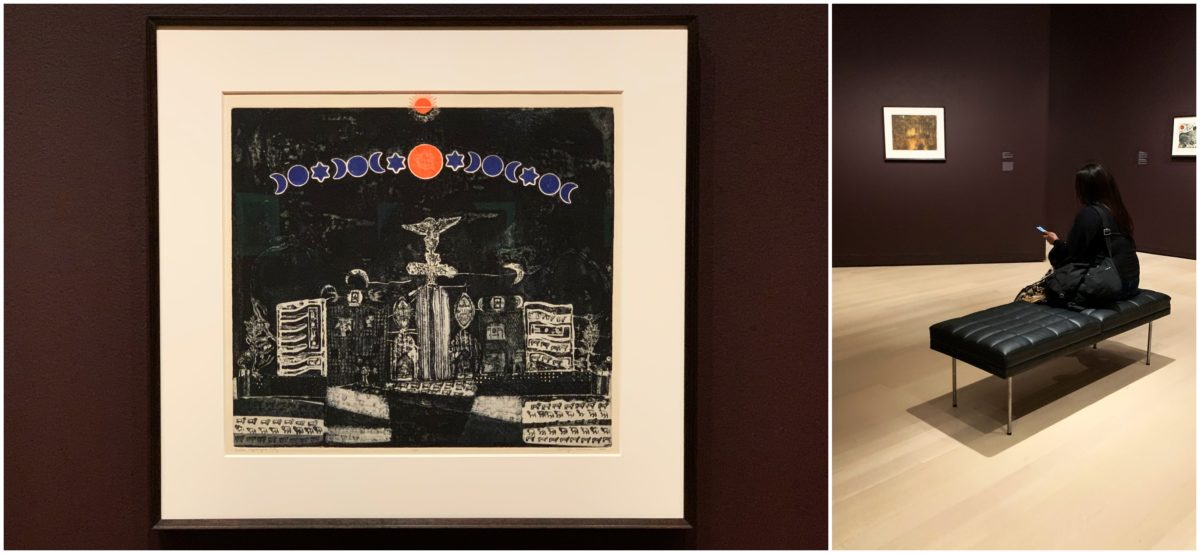
Betye Saar: The Legends of Black Girl’s Window exhibit at the MoMA in New York. Photo Credit: Dandelion Chandelier.
who is betye saar?
We confess, until we read about this exhibit as part of the news coverage of the re-opening of the MoMA, we had never heard of Betye Saar. That’s our bad, and kudos to MoMA for bringing her work to a broader audience. This is the first dedicated examination of her work as a print maker.
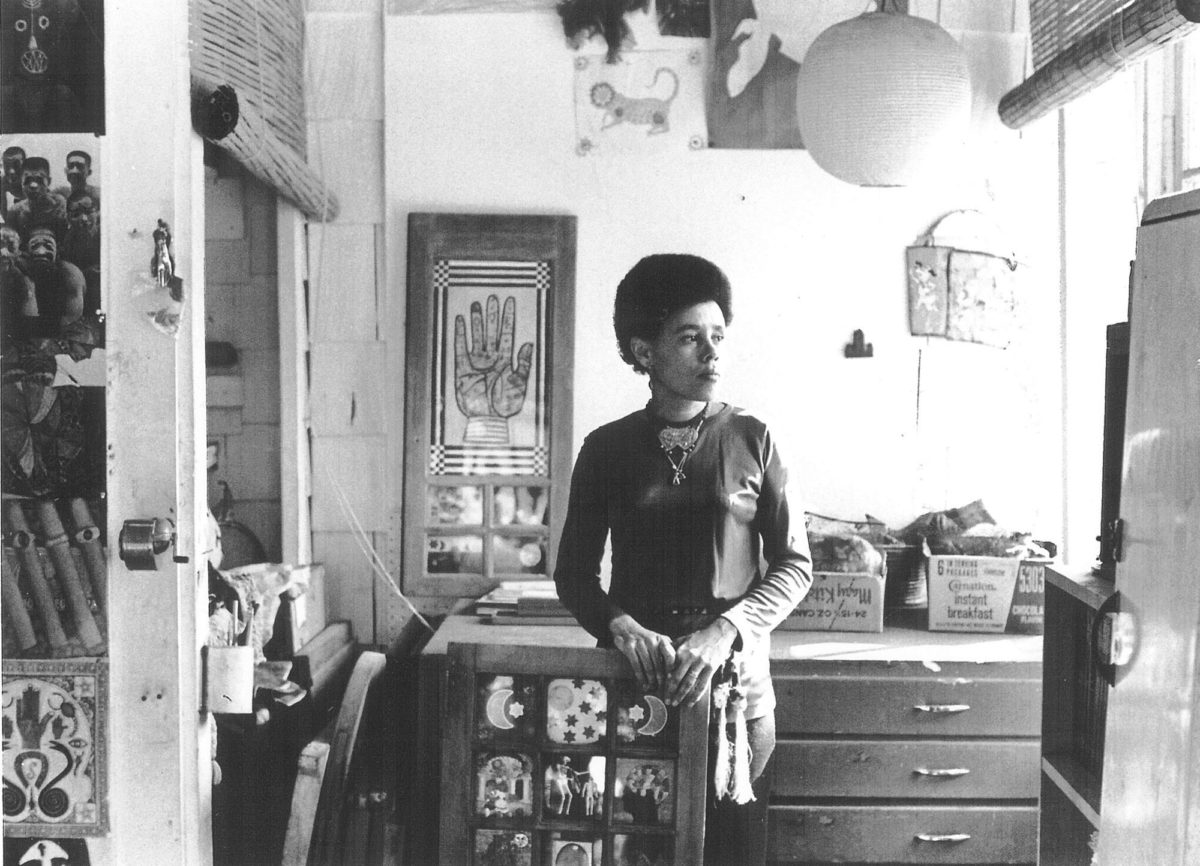
Artist Betye Saar in her studio in 1970; she is holding “Black Girl’s Window.” Photo Credit: Bob Nakamura, via Roberts Projects, Los Angeles.
Interestingly, just as this exhibit opens at the MoMA, another solo exhibit of Saar’s work will be running concurrently at the Los Angeles County Museum of Art.
The artist is now 93 years old, and she is definitely having a Moment.

The artist Betye Saar at her home in Los Angeles. Photo Credit: Erik Carter for the New York Times.
As we learned more about Betye Saar, we came to understand just how influential she was in the world of contemporary art. Kerry James Marshall took a college class with Saar in Chicago in the 1970’s.
In a recent interview, Marshall notes: “one of the things that gave her work importance for African-American artists, especially in the mid-70’s, was the way it embraced the mystical and ritualistic aspects of African art and culture. Her art really embodied the longing for a connection to ancestral legacies.”
Betye Saar: The Legends of Black Girl’s Window at the MoMA
In sharp contrast to much of the stark white-walled museum, the walls of this exhibit a the MoMA are a deep eggplant purple. It’s like stepping into a different institution in many ways when you cross the threshold: deeper, richer, more textured and more emotional. And much closer to the ground and the earth.
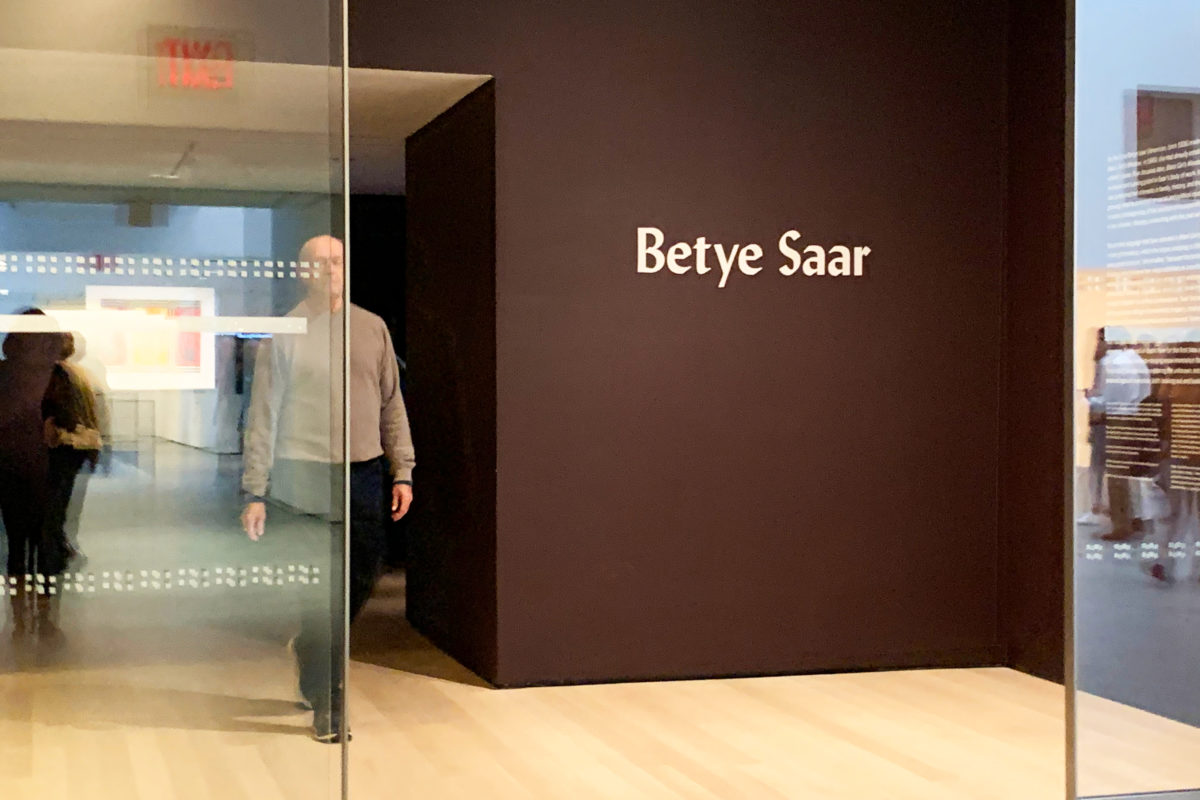
Betye Saar: The Legends of Black Girl’s Window at the MoMA in New York. Photo Credit: Dandelion Chandelier.
Saar began her career with an experimental print practice, and the museum recently acquired 42 of her rare early works on paper. The exhibit begins with some of the loveliest of these.
Prints depicting the natural world
The first print that we laid eyes on had a springtime mood. It depicts a child running joyfully in a meadow of yellow flowers.
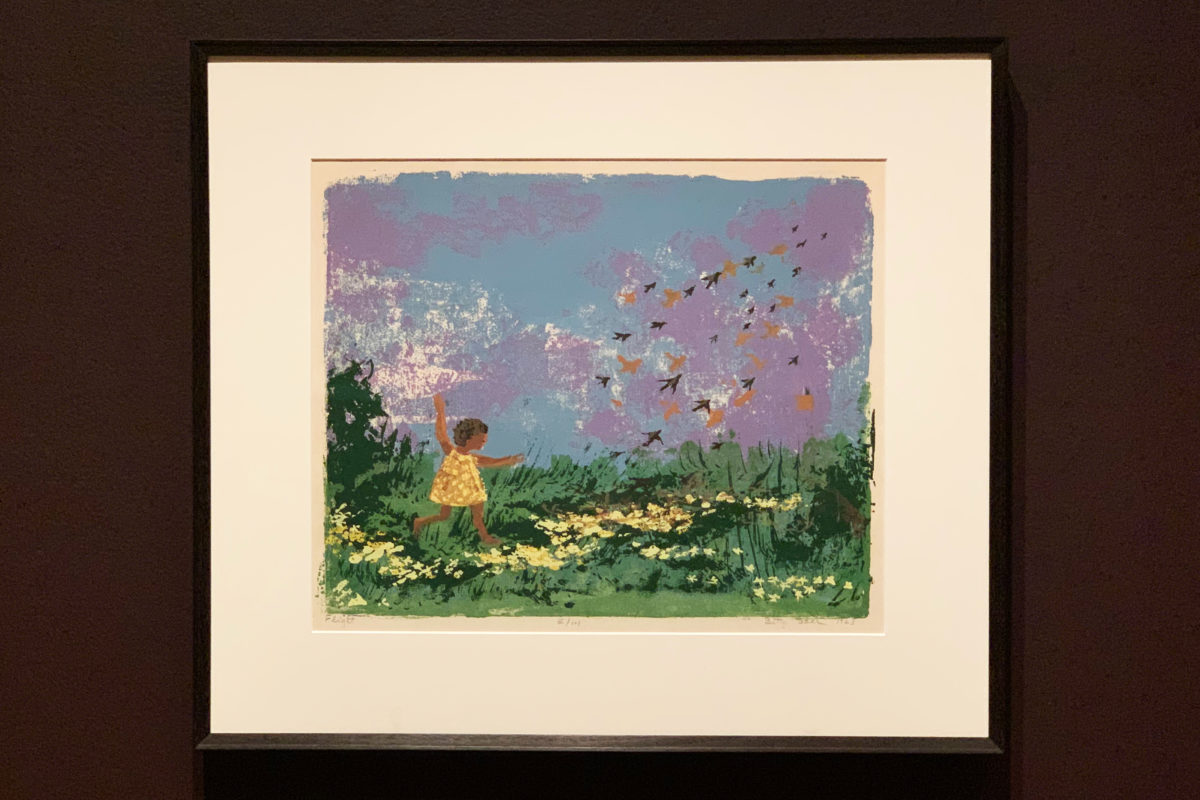
Flight (1963) from Betye Saar: The Legends of Black Girl’s Window at the MoMA in New York. Photo Credit: Dandelion Chandelier.
For the most part, though, the colors in these early works are rich and autumnal, and the mood is suffused with melancholy and regret in works like “The Wounded Wilderness” (1962).
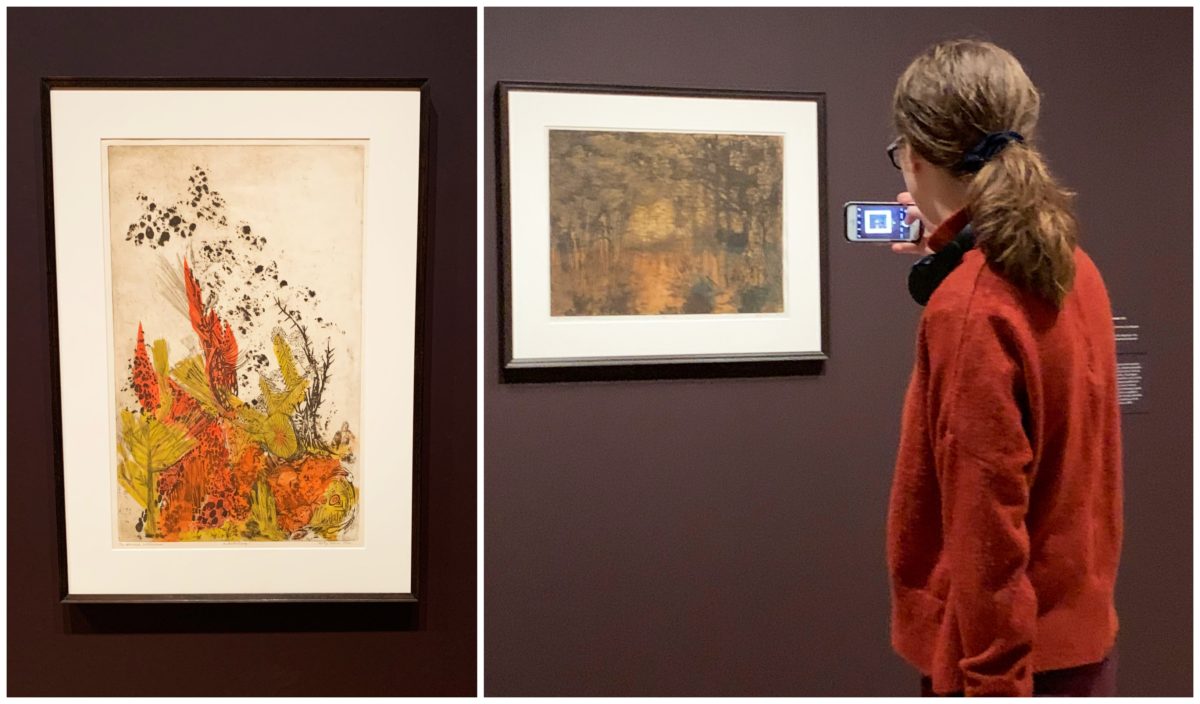
Betye Saar: The Legends of Black Girl’s Window at the MoMA in New York. Photo Credit: Dandelion Chandelier.
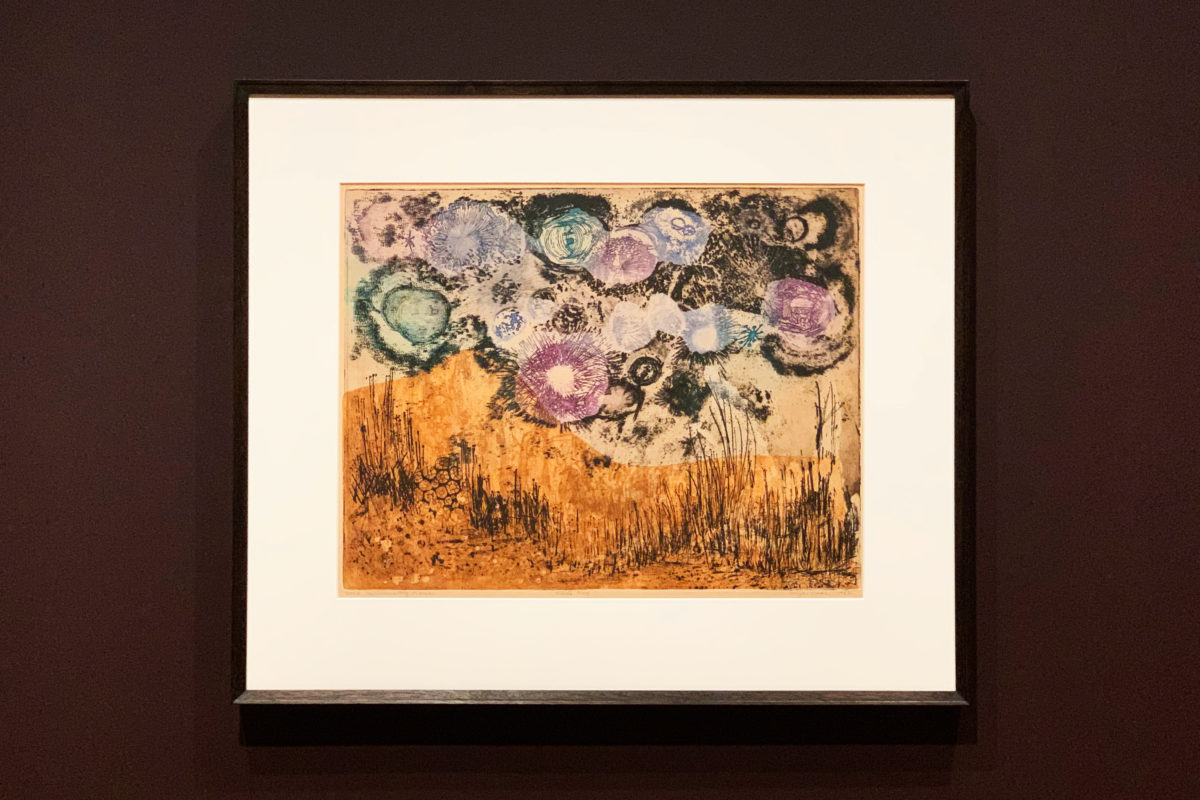
Amid Hallucinatory Moons (1962) Betye Saar: The Legends of Black Girl’s Window at the MoMA in New York. Photo Credit: Dandelion Chandelier.
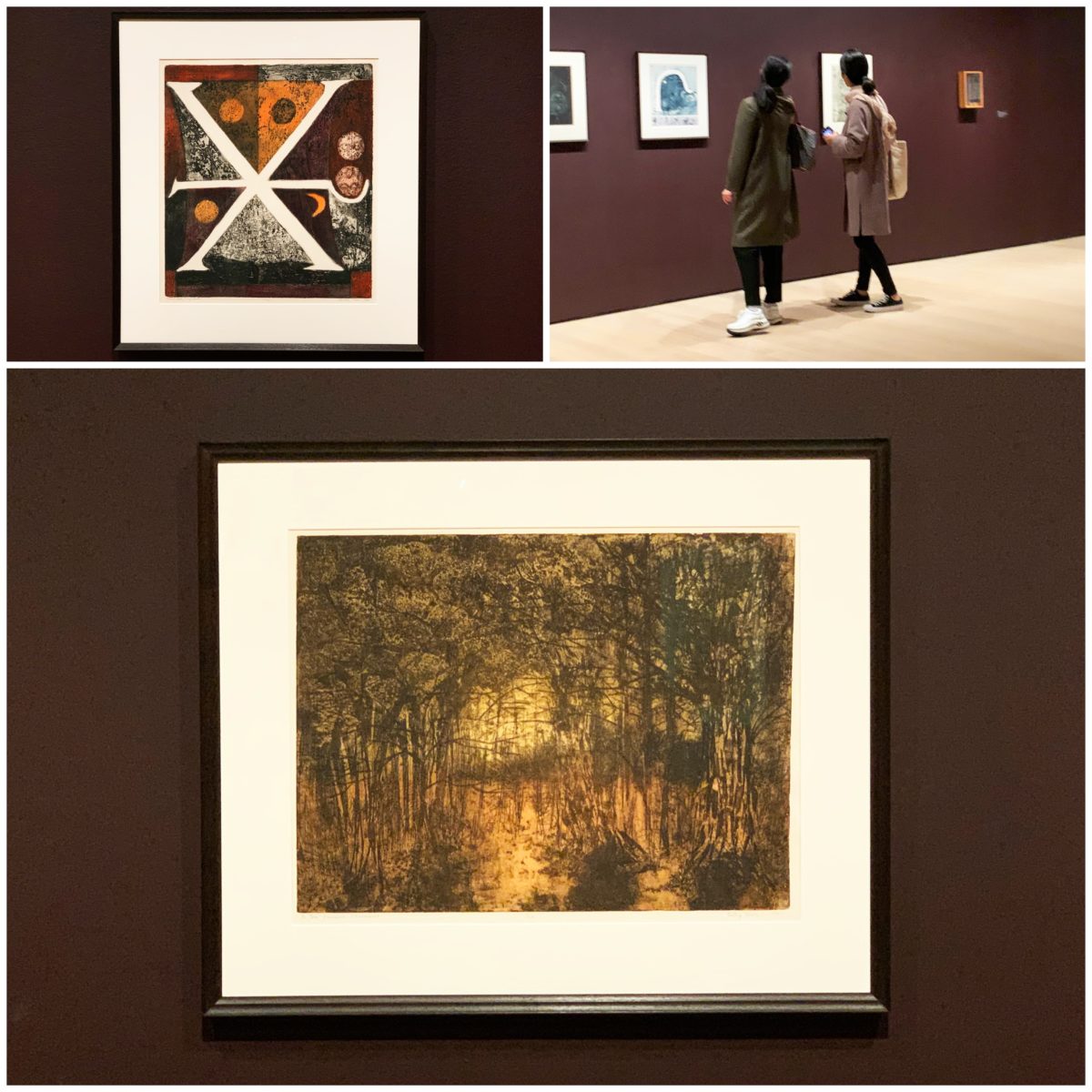
Summer Symbol (1965) and Lo, The Pensive Peninsula (1961) from Betye Saar: The Legends of Black Girl’s Window at the MoMA in New York. Photo Credit: Dandelion Chandelier.
Prints examining family relationships
The rich chocolate, sepia and ivory color palette continues in Saar prints about motherhood and her family. Saar was a working artist and full-time mother of three – a trailblazer in more ways than one.
“Anticipation” (1961) is a self-portrait, depicting Saar when she was pregnant with her third child. Her pose – sitting and holding flowers against a mottled background – is reminiscent of images of the Virgin Mary. While her expression is serene, the curators note that in it, she “captures both the joy of impending birth and the exhaustion of pregnancy.”

Betye Saar: The Legends of Black Girl’s Window at the MoMA in New York. Photo Credit: Dandelion Chandelier.
The New York Times notes that the print “Les Enfants d’Obscurité” registers as a sort of imaginary ultrasound, showing three babies in a shadowy womb.
Saar has three daughters, and in the early 1960’s they were both her charges and her muses. The work “Girl Children” depicts them together – the oldest in profile, the middle child peering out from behind the baby, who is at the center of it all.

Girl Children form Betye Saar: The Legends of Black Girl’s Window at the MoMA in New York. Photo Credit: Dandelion Chandelier.
The dual roles of artist and mother and the pressures it entailed were overlooked in that era – but these works form a powerful thread in Saar’s narrative today.
Prints depicting the mystical celestial world
Spirituality and the mystical arts are core to the work of Betye Saar. Her color palette shifts in the direction of inky black, icy white, shimmering silver and blue – the colors of the night sky – when the topic turns to the mystical world.
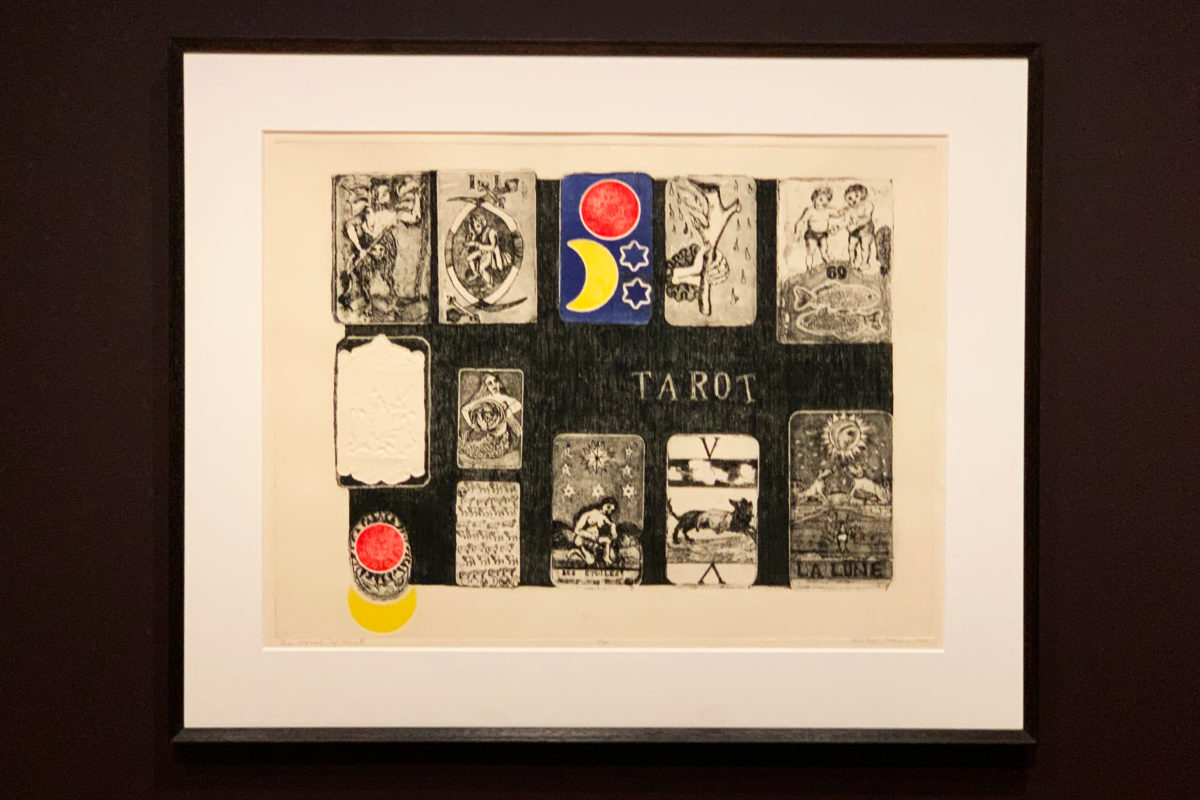
House of Tarot (1966) Betye Saar: The Legends of Black Girl’s Window at the MoMA in New York. Photo Credit: Dandelion Chandelier.
“House of Tarot” depicts cards representing Les Etoiles (the stars) and La Lune (the moon). Many of these cards are hand-drawn by the artist herself in great detail.
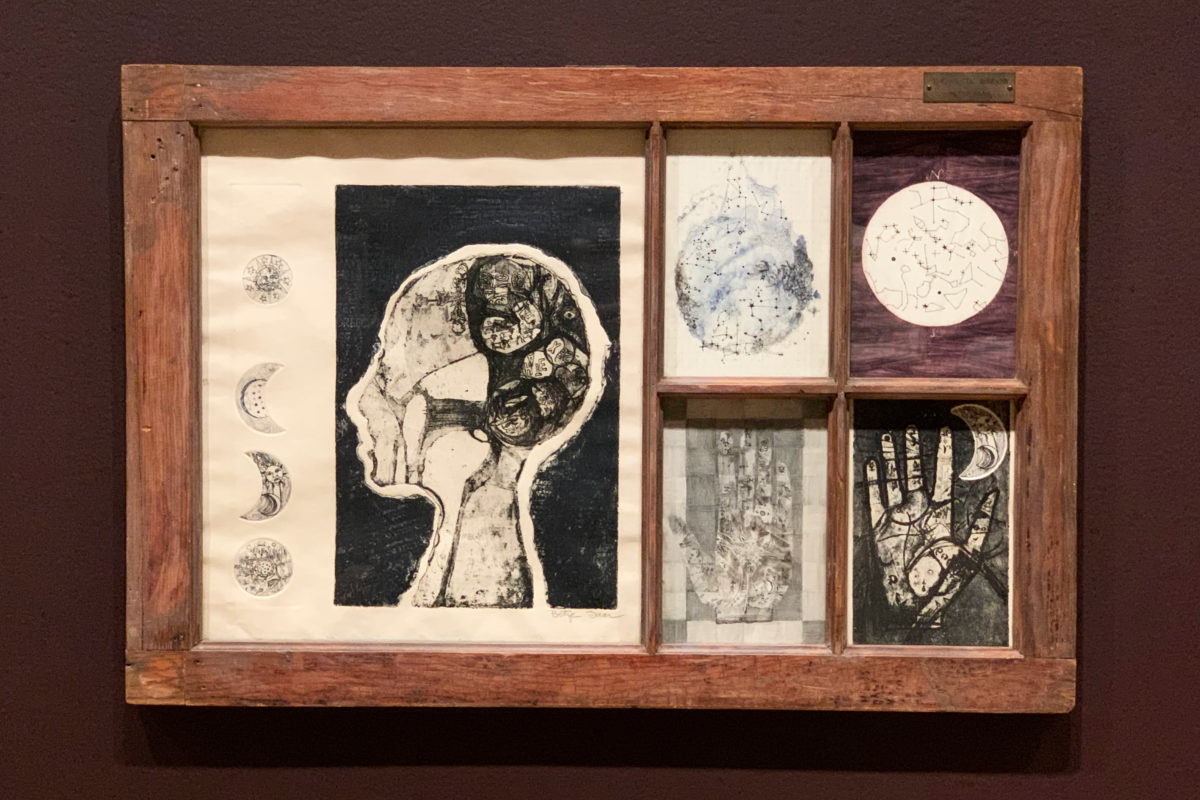
The Mystic Window #1 (1965) Betye Saar: The Legends of Black Girl’s Window at the MoMA in New York. Photo Credit: Dandelion Chandelier.
Saar’s prints of occult imagery are frequently crafted within the frame of an old window, like the one featuring three palms beneath moons and stars, as in The Palmist Window (1967).
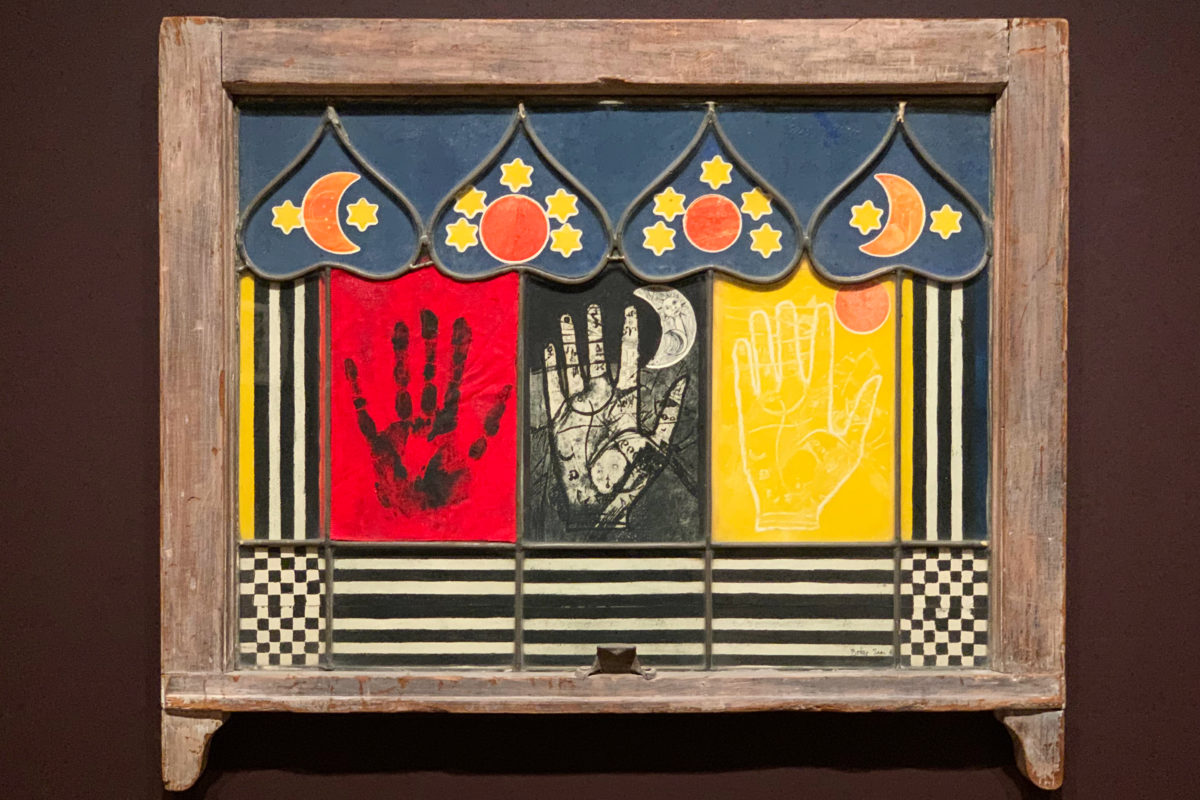
The Palmist Window (1967) Betye Saar: The Legends of Black Girl’s Window at the MoMA in New York. Photo Credit: Dandelion Chandelier.
The prints in this section are engrossing, and they radiate a sense of optimism and faith in the ebb and flow of the universe that is striking. Particularly in light of the times in which Saar created them, and the turn that her work would take toward urgent terrestrial matters.
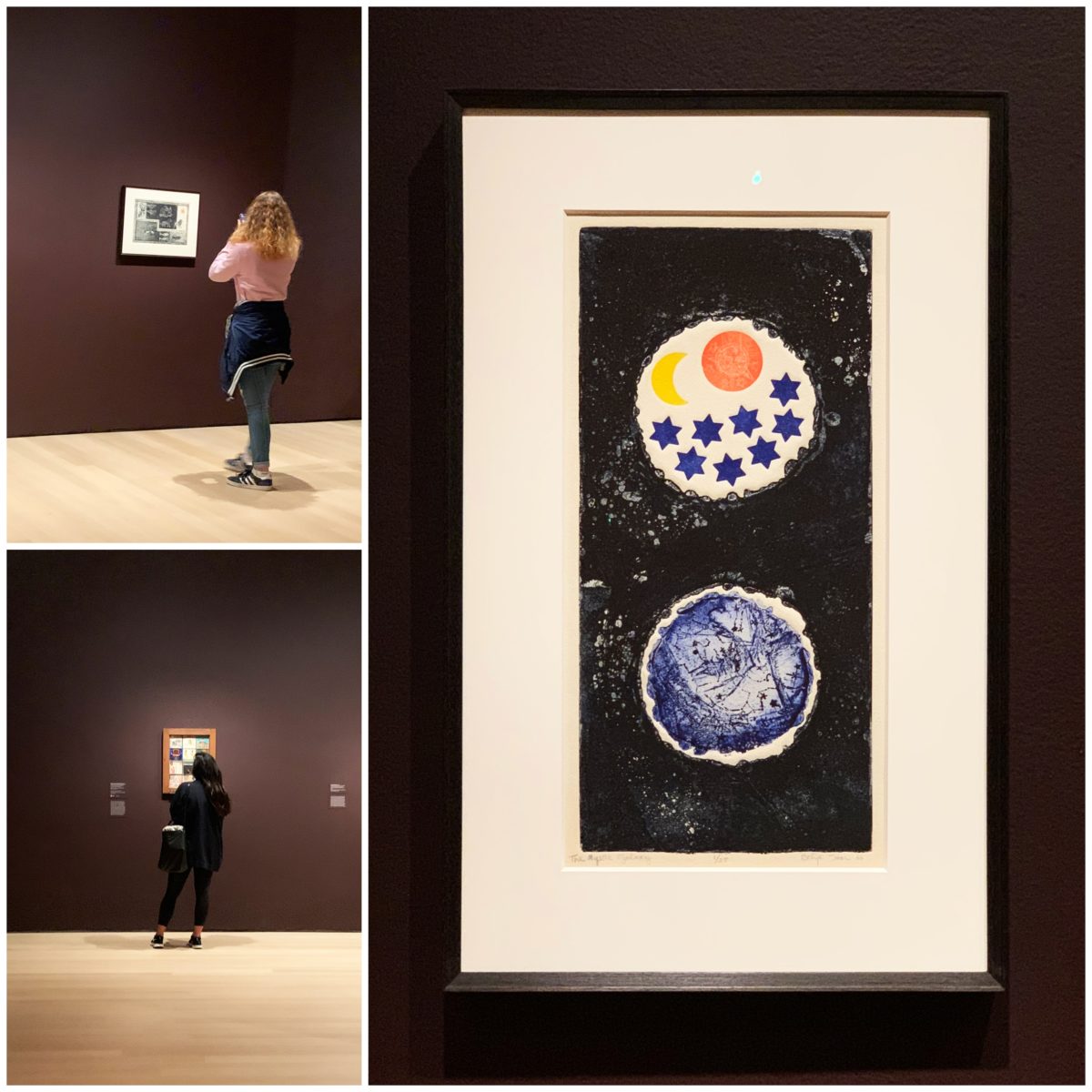
The Mystic Galaxy (1966) Betye Saar: The Legends of Black Girl’s Window at the MoMA in New York. Photo Credit: Dandelion Chandelier.
why Black Girl’s Window was a turning point
After nearly a decade of focused work in printmaking, Saar created her most famous work, her autobiographical assemblage Black Girl’s Window in 1969.
This work was a turning point in her career, marking the moment when she combined her interests in family, history and mysticism with her need to comment on social and political injustice in America.
It was also the first time that she began to incorporate found objects into her art, connecting with and transforming discarded items into something revealing and new.
Not surprisingly, this work holds pride of place at the center of the MoMA exhibit. Like many smaller works of art, it rewards those willing to sit with the piece and reflect on it for a few moments. Happily, a well-placed bench allowed us to do just that.
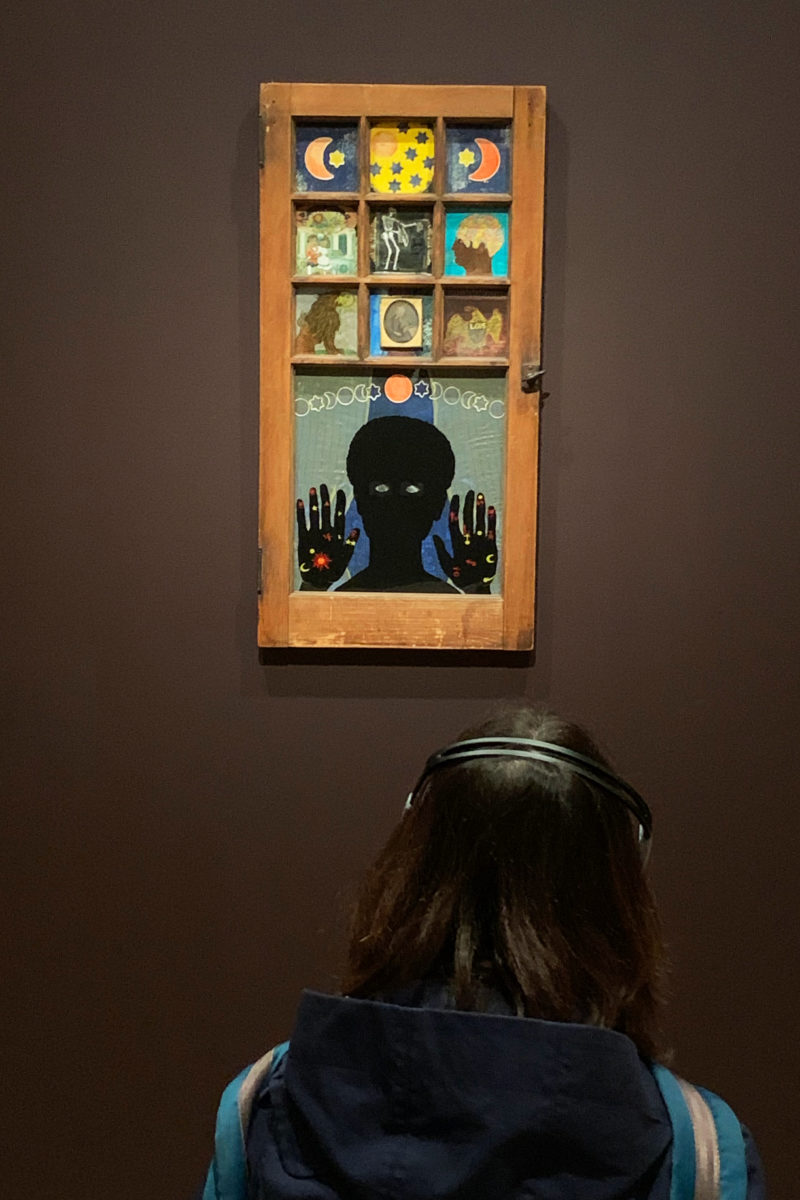
Betye Saar: The Legends of Black Girl’s Window at the MoMA in New York. Photo Credit: Dandelion Chandelier.
a closer look at Black Girl’s Window
The work itself feels both rustic and highly refined. A scarred wooden window frame has images in each of its panes. The top row is the moons and stars. The middle section is less obvious – there are symbolic images, like an eagle bearing a shield with the word “love,” a map of a human head, and a pair of skeletons, one white and one black.
At the bottom of the window, we see a young black woman’s face. Her bright blue eyes eyes are made of novelty glass, and her hands appear to be pressed against the window pane.
We later learned that this figure is the artist herself. But she also serves as Every Woman (or perhaps Everyone). Surrounded by memory, pain, hope and expectations – full of dreams and fears and searching for connection. The window serves a link to the outside and the inside – the nexus of our inner lives and our place in the world.

Betye Saar: The Legends of Black Girl’s Window at the MoMA in New York. Photo Credit: Dandelion Chandelier.
The New York Times art critic wrote of the piece: “The combined effect is moving and forceful, suggesting a young woman wrestling with the ghosts of the past and the vagaries of an uncertain future. She could be staring out the window and dreaming, or she could be looking at us with an appeal.“
The notes from the MoMA amplify that thought, stating that the work “reflects an interest in exploring the unknown, not unlike the girl pressed against a window, both looking out and looking in.”
slow viewing highly recommended
If you sit with the piece for a little while, it will make you reflect on your own life and where you are in your journey. And about the progression of the journeys of those who you love. Depending on the where you are – and where they are – these images might be comforting, or hopeful. Or a jolt and a call to action.
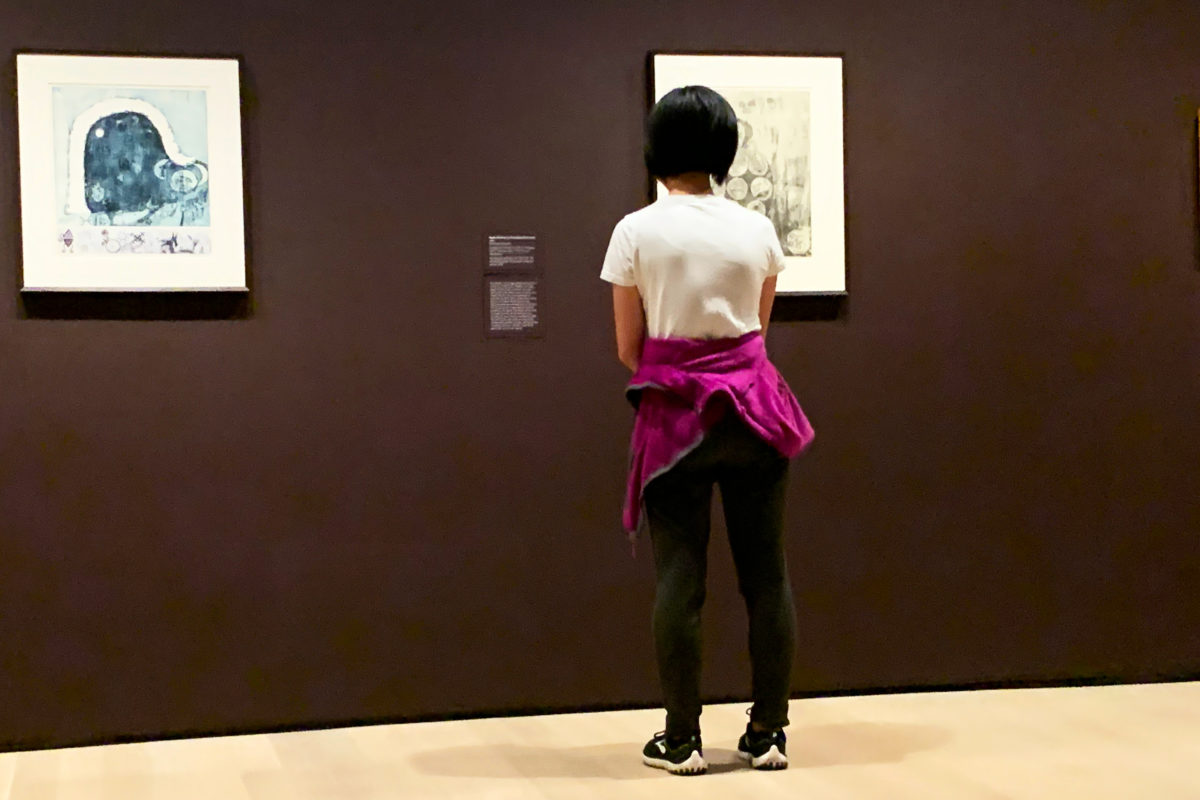
Betye Saar: The Legends of Black Girl’s Window at the MoMA in New York. Photo Credit: Dandelion Chandelier.
prints about race and civil rights
Saar’s work after this iconic piece took a decided turn in a new direction. Her color palette changes once more as the topic turns to race and the struggle for civil rights. Everything becomes more saturated and strong primary colors start to predominate. There is blood red, and cautionary yellow, and midnight blue.
“Black Crows in the White Section Only” brings together a variety of racist advertisements, anchored by two hooded Ku Klux Klan figures atop American flags. In one window pane, a small black boy looks at a “white Section Only” sign.
Saar later said of the late 60’s and 70’s: “I had three kids, so I couldn’t march . . . but I could make art.”
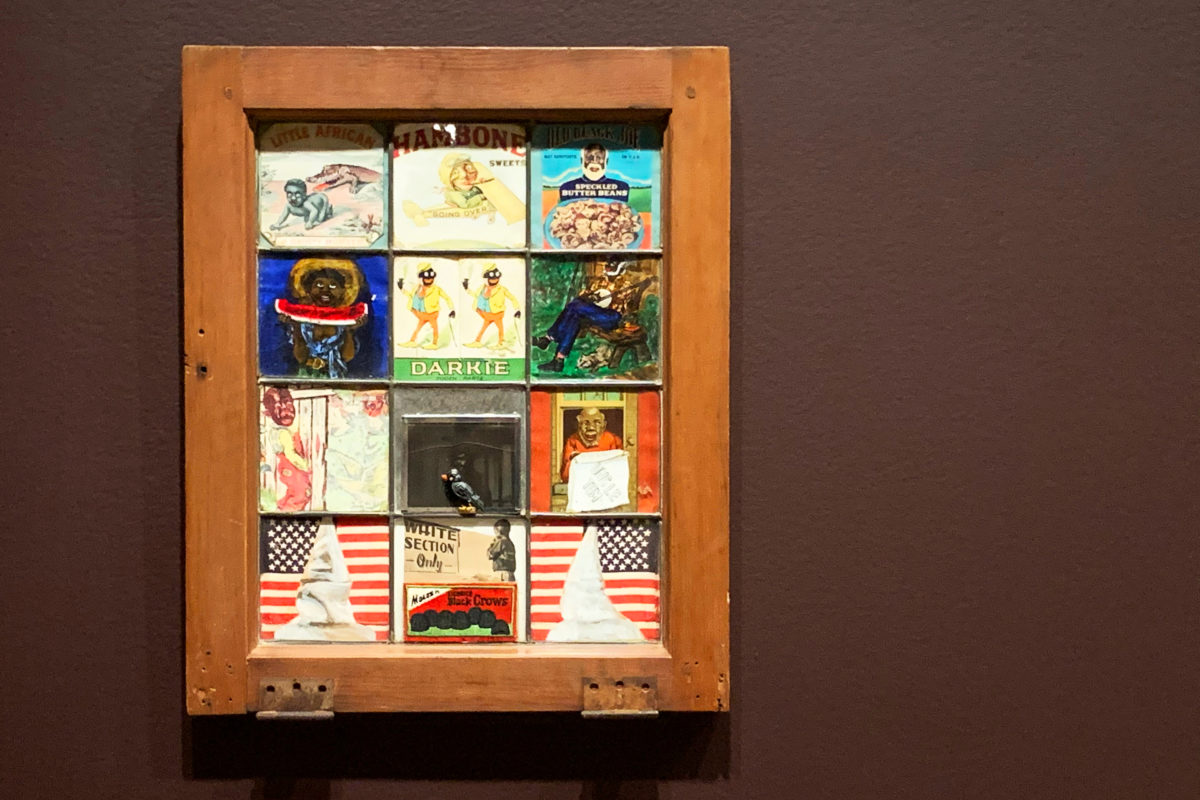
Black Crows in the White Section Only (1972) from the Betye Saar: The Legends of Black Girl’s Window exhibit at the MoMA in New York. Photo Credit: Dandelion Chandelier.
The three panels of “Let Me Entertain You” show a minstrel singer with a guitar transforming into a black liberation fighter with a rifle. Along the way, his ghostly outline appears atop a horrific photograph of a lynching.
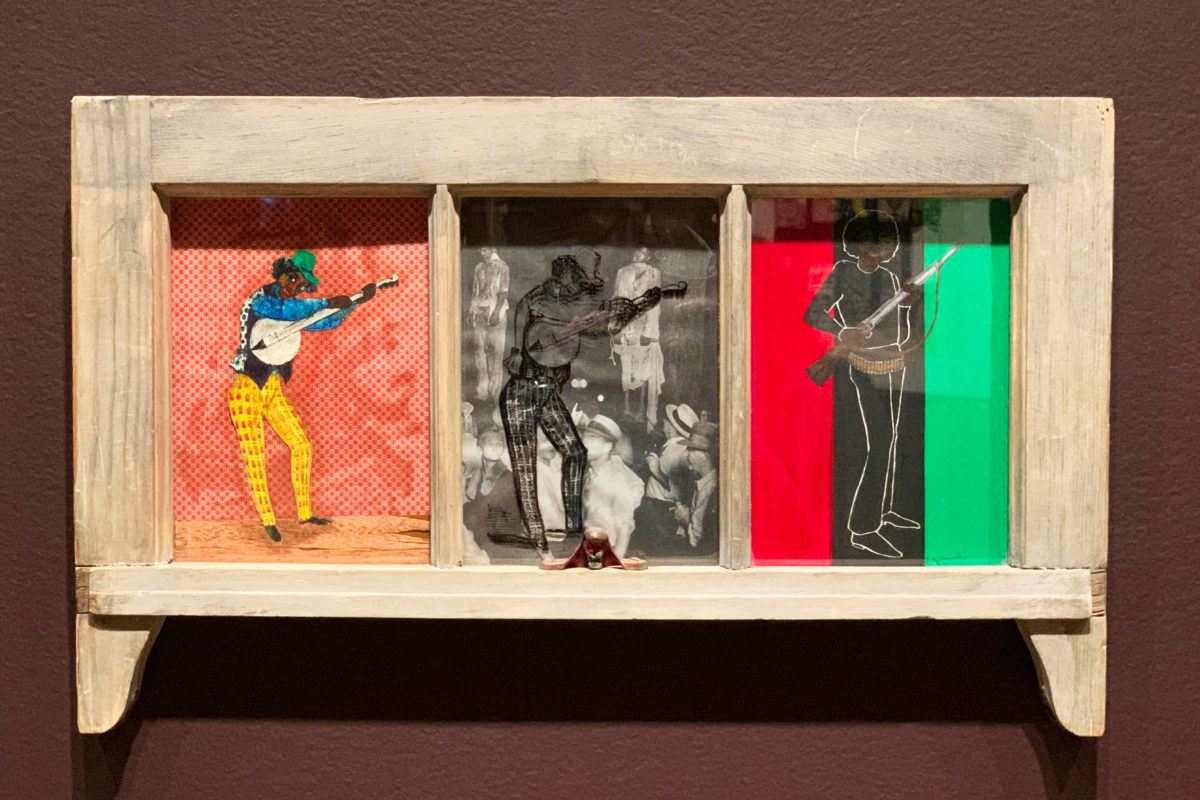
Let Me Entertain You (1972) Betye Saar: The Legends of Black Girl’s Window at the MoMA in New York. Photo Credit: Dandelion Chandelier.
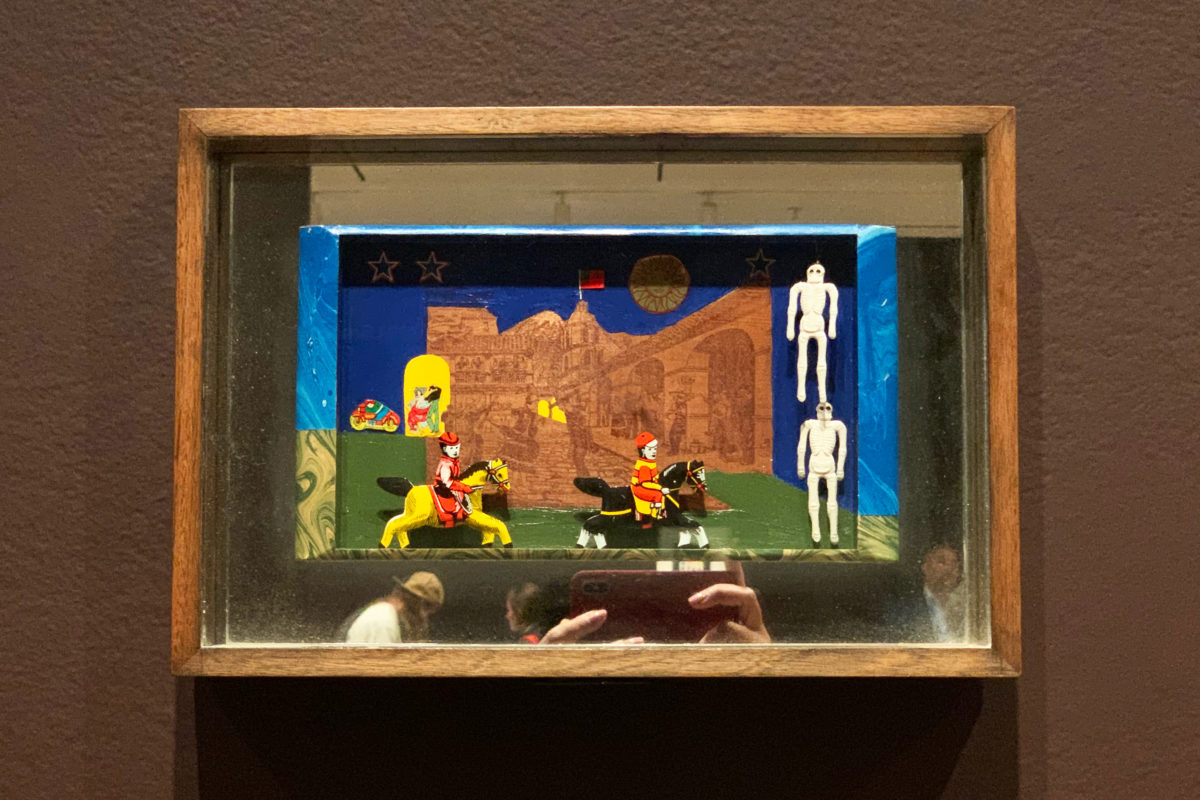
Fiesta of the Dead (1969) from the Betye Saar: The Legends of Black Girl’s Window exhibit at the MoMA in New York. Photo Credit: Dandelion Chandelier.
Betye Saar: The Legends of Black Girl’s Window at the MoMA
The critical reviews of the exhibit note that this collection of works effectively tells the story of Saar’s early years as an artist, and point the way toward who she came to be. There are several more chapters to her work and life, and we hope that MoMA will give them equal time.
In the meantime, if you want to learn more, grab the book that accompanies the exhibit ($14.95) and learn more about the artist and her work.
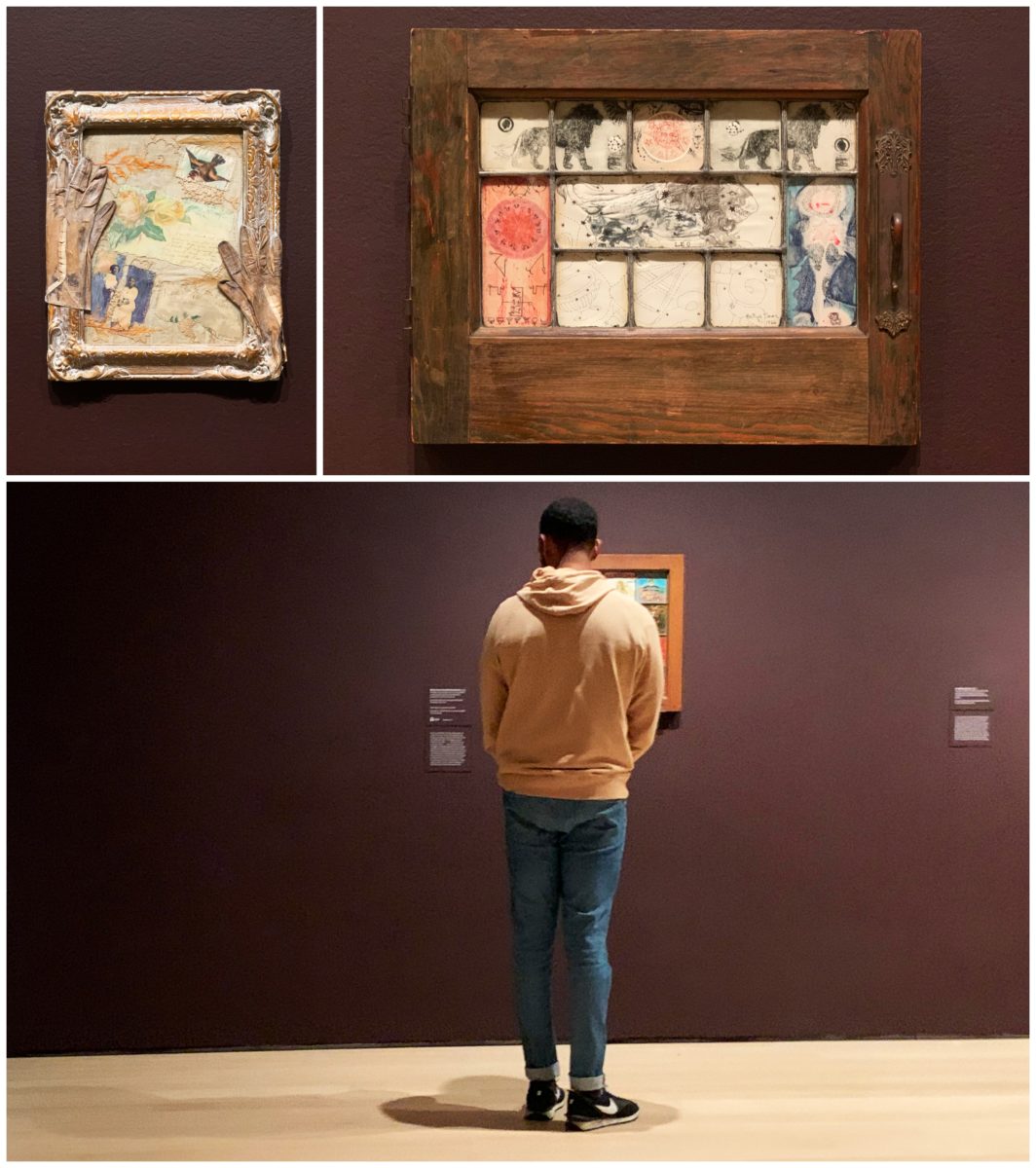
Lo, The Mystique City (1965) and Keep for Old Memoirs (1976) from Betye Saar: The Legends of Black Girl’s Window exhibit at the MoMA in New York. Photo Credit: Dandelion Chandelier.
Or grab one of the new “artist quote totes” ($10) at the MoMA Design Store. We love the scrappy optimism of Betye Saar’s eggplant purple version.

The MoMA Design Store “Quote Tote” with a quote from Betye Saar ($10). Courtesy Photo.
Because as the artist herself said in a recent interview: “It’s about time! I’ve had to wait till I’m practically 100.”
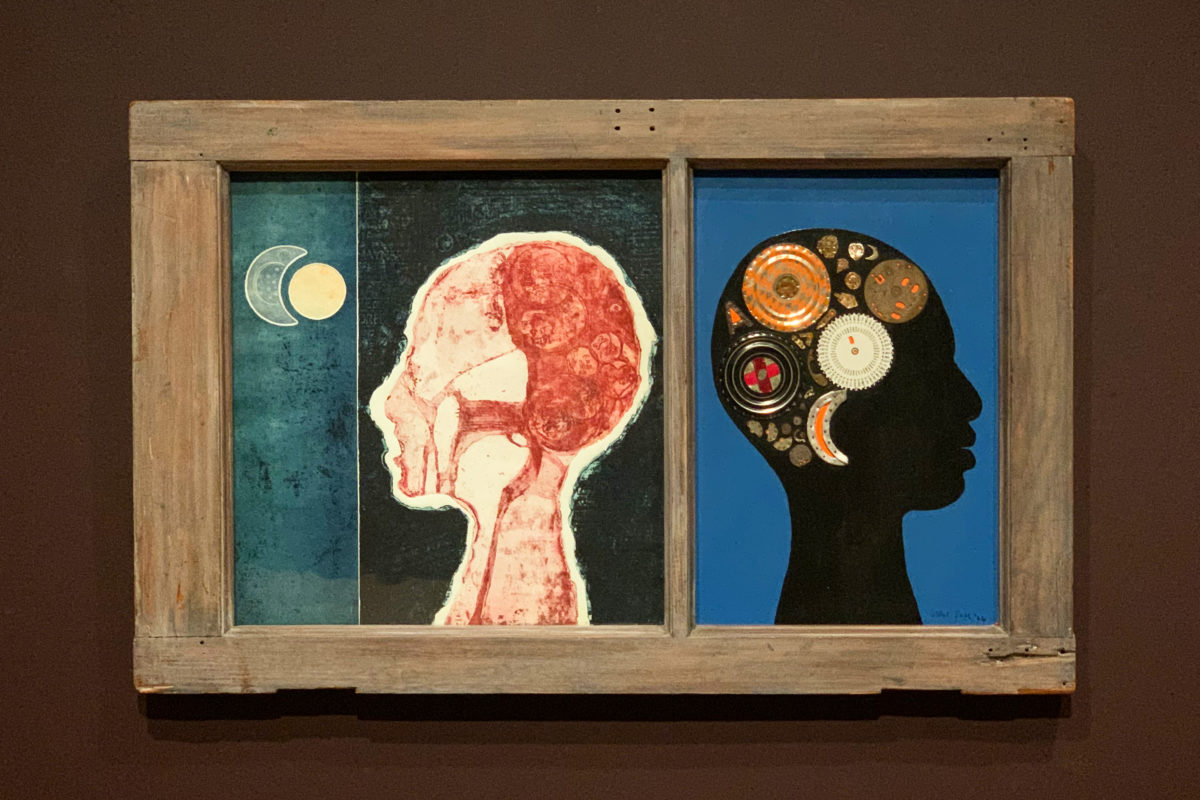
The Phrenologer’s Window II (1966) Betye Saar: The Legends of Black Girl’s Window exhibit at the MoMA in New York. Photo Credit: Dandelion Chandelier.
Having seen Betye Saar’s work up close, we left feeling revived and restored. As if we had just had a conversation with an older, wiser, trusted friend. The meadow, the moon, motherhood, and morphing from caricature into a force to be reckoned with. And a discerning eye to depict it all. Absolutely brilliant.
Betye Saar: The Legends of Black Girl’s Window runs until January 4, 2020. Catch it if you can.
join our community
For access to insider ideas and information on the world of luxury, sign up for our Dandelion Chandelier newsletter here. And see luxury in a new light.
Join our community
For access to insider ideas and information on the world of luxury, sign up for our Dandelion Chandelier newsletter. And see luxury in a new light.
